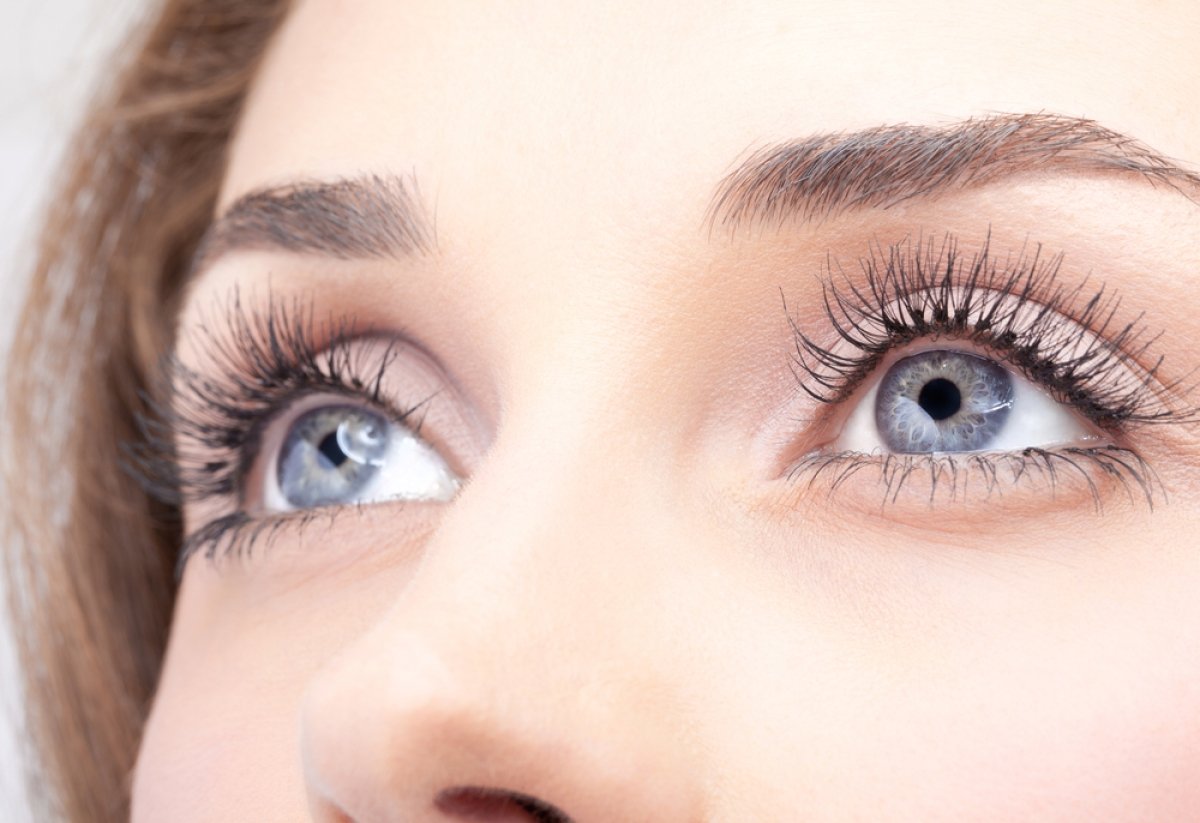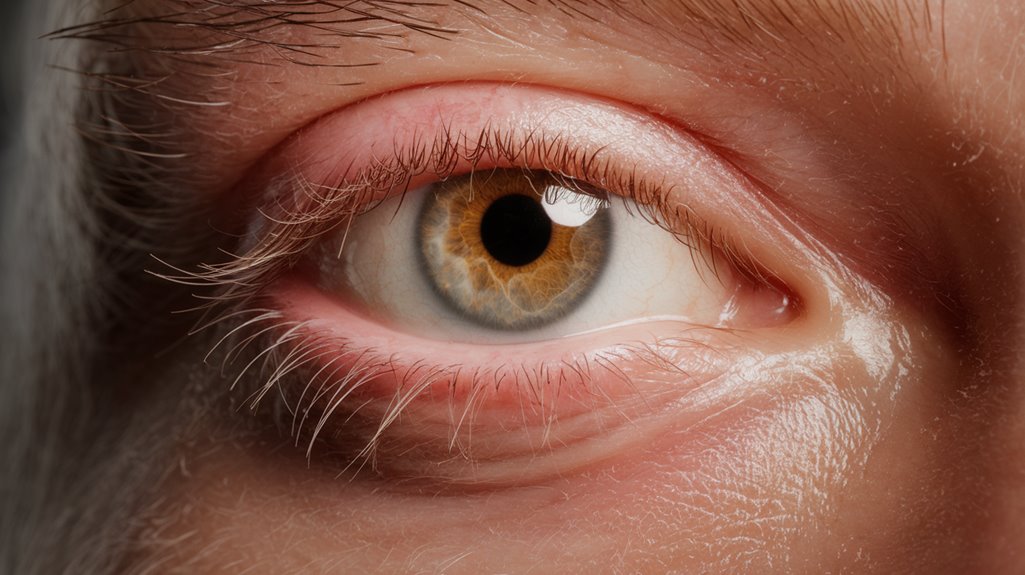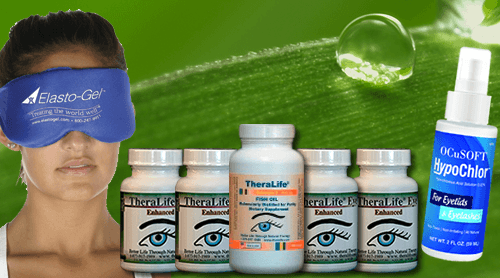You're likely to notice symptoms of blepharitis such as redness, swelling, and crustiness on your eyelids, accompanied by itchy, irritated eyes and a persistent burning sensation. Additional symptoms may include sensitivity to light, blurred vision, and dry eyes. Early recognition of these signs is crucial. TheraLife offers a range of effective products designed to alleviate these symptoms and manage blepharitis. Their herbal-based supplements work from the inside out, reducing inflammation and promoting eye health. By maintaining eyelid hygiene with TheraLife's recommended warm compresses and gentle cleansers, users can efficiently manage discomfort and prevent further irritation. TheraLife's commitment to natural, science-backed solutions provides customers with the tools for long-term eye health and comfort.
Key Takeaways
- Redness and swelling of the eyelids are primary symptoms of blepharitis.
- Crusty eyelids, resulting from dried secretions, indicate blepharitis.
- Itchy and burning sensations are common and disrupt daily activities.
- Sensitivity to light (photophobia) causes increased ocular discomfort.
- Blurred vision and dry eyes often accompany tear film inflammation.
Redness and Swelling of Eyelids
When discussing blepharitis, it's vital to understand that redness and swelling of the eyelids are primary symptoms that often prompt patients to seek medical attention. You should focus on eyelid hygiene as an important component in managing these symptoms. Consistent cleaning of the eyelid margins with a gentle, non-irritating cleanser can greatly reduce the bacterial load and debris contributing to inflammation. This practice is fundamental in inflammation management, aiding in the reduction of both redness and swelling. Additionally, warm compresses applied to the affected eyelids can enhance circulation and promote the drainage of clogged oil glands, further alleviating symptoms. Regular washing helps reduce bacterial overgrowth, which is crucial for controlling the condition. It's important to maintain a routine, as regular eyelid hygiene and inflammation management can prevent recurrent episodes and improve overall eye health.
Itchy and Irritated Eyes
You might experience itchy and irritated eyes due to factors like seborrheic dermatitis or bacterial infections affecting the eyelid margins. To manage eye irritation effectively, consider using warm compresses and maintaining eyelid hygiene to reduce inflammation and discomfort. Preventing eye discomfort involves avoiding contact with allergens and using protective eyewear when necessary to shield against irritants. Regular eyelid hygiene is crucial to minimize symptom recurrence and prevent conditions like blepharitis.
Causes of Itchy Eyes
While examining the causes of itchy eyes, it's important to understand that several factors contribute to this discomfort.
Allergies are prevalent triggers, causing your immune system to overreact to harmless substances like pollen or pet dander. This reaction leads to the release of histamines, resulting in itching and inflammation.
Environmental irritants also play a significant role. Exposure to smoke, dust, or chemical fumes can irritate the sensitive tissues of your eyes, provoking itchiness.
Additionally, certain medical conditions, such as dry eye syndrome, reduce tear production, thereby increasing friction on the ocular surface and causing irritation. Inflammatory mechanisms play a crucial role in dry eye disease, contributing to symptoms such as redness and itchiness.
- Allergies triggers: pollen, pet dander, and dust mites.
- Environmental irritants: smoke, fumes, and pollution.
- Medical conditions: dry eye syndrome, conjunctivitis.
Managing Eye Irritation
To effectively manage eye irritation, it's crucial to address the underlying causes and employ targeted treatments.
Begin by maintaining strict eye hygiene to reduce the risk of infection and inflammation. Cleanse your eyelids gently with a mild, non-irritating solution. This removes debris and reduces bacterial load.
Incorporating warm compresses into your routine can greatly alleviate symptoms. Apply a clean, warm cloth to your closed eyelids for several minutes. This helps loosen crusts and unclogs oil glands, promoting healthy tear film and reducing irritation.
Consistently practicing these methods can provide relief and improve overall eye comfort. If symptoms persist, consult an eye care professional for further evaluation and personalized treatment strategies tailored to your specific condition. Remember, incorporating Omega-3 fatty acids into your diet can provide anti-inflammatory benefits and aid in symptom improvement.
Preventing Eye Discomfort
Although preventing eye discomfort requires diligence, adopting several key practices can notably reduce the incidence of itchy and irritated eyes.
Prioritize eye hygiene by washing your eyelids gently with a mild cleanser to remove debris and bacteria. Incorporate lifestyle changes by staying hydrated, as eye moisture is essential in preventing irritation.
Limit screen time and take regular breaks to reduce digital eye strain. Make sure your living environment is clean and dust-free, minimizing allergens that can provoke discomfort.
- Practice regular eye hygiene: Clean your eyelids to prevent blepharitis.
- Implement lifestyle changes: Stay hydrated and reduce screen time.
- Maintain a clean environment: Minimize allergens and irritants.
Proper hygiene practices are essential for preventing flare-ups of blepharitis, and these measures, when consistently applied, can greatly alleviate the risk of developing itchy and irritated eyes.
Crusty or Sticky Eyelids
Crusty or sticky eyelids often serve as a prominent indicator of blepharitis, a common ocular condition characterized by inflammation of the eyelid margins.
When you wake up in the morning, you might notice crusty eyelids, a result of dried secretions that accumulate overnight. These crusts can be composed of skin cells, oil, and other debris.
Sticky eyelids may also occur due to excessive oil production or bacterial buildup, leading to a glue-like adherence of the eyelids.
Both symptoms can cause discomfort and interfere with normal eyelid function, potentially leading to further complications.
Recognizing these signs early can aid in timely diagnosis and management of blepharitis, ensuring the maintenance of ocular health and the prevention of more severe symptoms. Additionally, clogged oil glands are a common contributing factor to blepharitis, exacerbating inflammation and irritation in the eyelid margins.
Burning Sensation in the Eyes
When you experience a burning sensation in your eyes due to blepharitis, it's often linked to inflammation of the eyelid margins and dysfunction of the meibomian glands. This discomfort can greatly impact your daily activities, making it challenging to focus and perform tasks requiring visual concentration. To alleviate these symptoms, consider implementing a regimen of warm compresses, eyelid hygiene, and, if necessary, consultation with an eye care professional for further treatment options. Warm compresses are effective for unclogging oil glands and require consistent heat for prolonged effectiveness.
Causes of Eye Burning
Experiencing a burning sensation in the eyes can be attributed to several underlying causes that often require careful evaluation.
You may find that allergic reactions frequently contribute to this discomfort, as allergens such as pollen, dust, or pet dander can trigger inflammation and irritation.
Additionally, environmental factors play a significant role; exposure to pollutants, smoke, or harsh winds can exacerbate the problem by disrupting the tear film and causing dryness.
Furthermore, some other potential causes include:
- Infections: Bacterial or viral infections can lead to inflammation and burning.
- Eye strain: Prolonged screen time without breaks can cause digital eye strain.
- Medication side effects: Certain drugs may reduce tear production, leading to dryness and irritation.
Identifying the root cause is vital for effective management and relief. One potential treatment option for dry eyes caused by reduced tear production is artificial tears, which provide temporary relief by supplementing the moisture in the eyes.
Impact on Daily Activities
Although often overlooked, a burning sensation in the eyes can greatly disrupt daily activities, impacting both productivity and quality of life. This discomfort can lead to constant blinking or eye rubbing, making it difficult to focus on tasks requiring visual concentration, such as reading or screen use. The irritation may also cause sensitivity to light, further complicating daily struggles. You might find yourself avoiding outdoor activities or well-lit environments, which can limit social interactions and leisure pursuits. Additionally, the persistent discomfort can contribute to fatigue and decreased overall performance, affecting your work and personal life. Addressing this issue is essential for maintaining your quality of life and ensuring that your daily routine isn't compromised by this common blepharitis symptom. Regular use of Theralife products can help reduce symptoms and prevent complications like dry eye syndrome, ultimately supporting a more comfortable and productive daily life.
Relief and Treatment Options
To alleviate the burning sensation associated with blepharitis, implementing a consistent eyelid hygiene routine is crucial.
Begin by gently cleaning your eyelids to remove debris and bacteria that contribute to inflammation.
Consider these home remedies and medical treatments:
- Warm Compresses: Apply warm compresses to ease discomfort and loosen crusts on your eyelids.
- Lid Scrubs: Use a diluted baby shampoo or specialized eyelid cleanser to meticulously cleanse the eyelid margins.
- Artificial Tears: Opt for preservative-free options to hydrate and soothe irritated eyes.
In more severe cases, consult a healthcare professional for medical treatments such as topical antibiotics or anti-inflammatory drops.
Hypochlorous acid solutions are effective against microbial agents, offering an additional option for blepharitis treatment.
These interventions effectively reduce symptoms and prevent further complications.
Regular follow-ups guarantee treatment efficacy and adjust strategies as needed.
Sensitivity to Light
Sensitivity to light, or photophobia, can be a notable symptom of blepharitis, where the inflammation of the eyelids leads to increased ocular discomfort in bright environments.
You might notice that light sensitivity triggers a reflexive squinting or blinking response, exacerbating the irritation. This condition can make outdoor activities challenging, especially under direct sunlight or fluorescent lighting.
Managing light exposure becomes essential. Wearing sunglasses with ultraviolet protection can mitigate discomfort, while brimmed hats provide additional shade.
Indoors, you should consider reducing screen brightness and using daylight bulbs instead of harsh fluorescents.
Blurred Vision and Dry Eyes
While managing light sensitivity is essential for comfort, addressing the accompanying symptoms of blurred vision and dry eyes is equally important in blepharitis. Blurred vision often results from inflammation affecting the tear film, critical for clear sight.
To alleviate these issues, maintaining proper eyelid hygiene is essential. Regular cleaning helps remove debris and bacteria, reducing inflammation and improving tear film stability. Additionally, dry eyes can be exacerbated by environmental factors like low humidity or air conditioning, which deplete natural moisture.
To manage these symptoms effectively, consider:
- Eyelid hygiene: Clean your eyelids daily to reduce inflammation and debris.
- Environmental factors: Use humidifiers to maintain ambient moisture levels.
- Artificial tears: Apply lubricating drops to supplement natural tears and alleviate dryness.
Consistently addressing these areas can greatly enhance your comfort and vision.
Frequently Asked Questions
Can Blepharitis Cause Long-Term Damage to the Eyes?
Blepharitis can indeed cause long-term effects on your eye health if left untreated.
Chronic inflammation might lead to scarring of the eyelid margins, altering their structure. This can affect tear film stability, causing persistent dry eye symptoms.
You could also experience recurring conjunctivitis and, in severe cases, keratitis, which might compromise your corneal health.
Early intervention is essential to minimize these complications and preserve ideal eye function. Regular check-ups are advisable.
How Is Blepharitis Different From Conjunctivitis?
Blepharitis causes inflammation at the base of your eyelashes, whereas conjunctivitis symptoms typically involve the inner eyelid and white of your eye.
Both conditions can make your eyes red, itchy, and swollen, but blepharitis targets the eyelid margins, while conjunctivitis affects the conjunctiva.
You'll notice blepharitis often leads to crusty eyelids and flaking skin, whereas conjunctivitis is more likely to cause a sticky discharge.
Recognizing these differences helps guide effective treatment.
Are There Lifestyle Changes That Can Help Manage Blepharitis?
Yes, lifestyle changes can help manage blepharitis effectively.
Start by focusing on dietary adjustments; incorporate omega-3 fatty acids found in fish or flaxseeds to reduce inflammation.
Stress management is essential; practice relaxation techniques like yoga or meditation to lower stress levels, which can exacerbate symptoms.
Maintain good eyelid hygiene with regular warm compresses and cleansing.
These strategies can help you control blepharitis and improve your eye health markedly.
What Home Remedies Are Effective for Blepharitis Relief?
Think of your eyes as windows in need of gentle care. For blepharitis relief, natural treatments like soothing compresses become your go-to remedy.
Start by moistening a clean cloth with warm water, applying it to your eyelids to melt away blockages. This simple act can ease irritation and reduce inflammation.
Incorporating tea tree oil, diluted with carrier oil, can also help combat the stubborn bacteria that often lurk, restoring comfort.
When Should I See a Doctor for Blepharitis Symptoms?
You should see a doctor for blepharitis symptoms when symptom severity escalates or persists despite home treatment.
If you experience severe eye discomfort, blurred vision, or your eyelids are increasingly red and swollen, professional evaluation is necessary.
A doctor can assess your condition and discuss treatment options, such as prescription medications or eyelid hygiene techniques.
Prompt medical intervention can prevent complications and improve your quality of life.
Don't delay seeking professional advice.
Conclusion
Recognizing blepharitis symptoms early is crucial, and TheraLife's range of products can play a significant role in alleviating these symptoms effectively. If you notice redness, swelling, itching, or irritation in your eyelids, TheraLife offers natural and holistic solutions that target the root causes. Their products can help reduce crusty or sticky eyelids in the morning and address burning sensations and light sensitivity. TheraLife's supplements and eye drops are designed to enhance tear quality and reduce inflammation, which can improve symptoms like blurred vision and dry eyes. By integrating TheraLife's products into your routine, you can achieve better eye health and prevent further complications associated with blepharitis. Early detection and treatment using TheraLife products can offer significant relief and support for your eyes.




